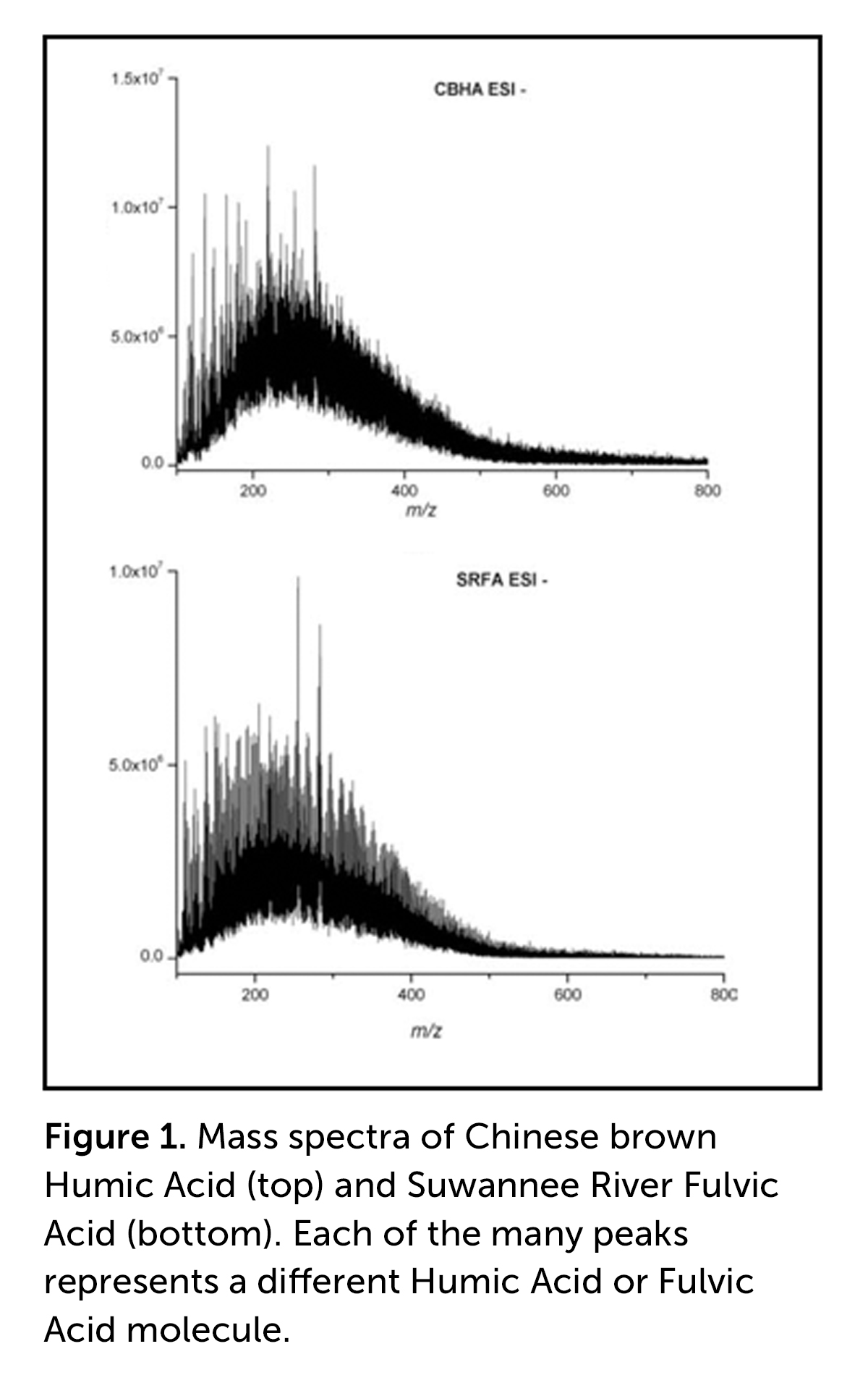By Richard Lamar, PhD
Director of Humic Research
Bio Huma Netics, Inc.


To review, the operational definitions of HA and FA are that FA are soluble in water under all pH conditions, while HA are soluble in water only under alkaline conditions. Thus, in a strong alkaline extract, such as Huma Pro® 16 (with a pH of 11.0–12.0), both HA and FA are soluble, primarily because they become salts (e.g., potassium salts), are fully negatively charged, and the negatively charged molecules separate and repel each other. If the pH is decreased to pH 1, for example with concentrated hydrochloric acid (HCl), all the COOH and Ar-OH groups become re-protonated (i.e., an H atom is added to the negatively charged COO– and Ar-O– groups) and the HA precipitates because there are no longer any negative charges to repel HA molecules, and it is no longer water soluble.
FA molecules, which possess abundant COOH and Ar-OH, as well as other oxygen-containing functional groups, remain in solution because the presence of all these groups makes H-bonding with H2O possible. Conversely, HA molecules, which possess limited numbers of oxygen-containing functional groups that do not possess enough force via H-bonding compared with the size of the molecules to keep the molecules soluble, become more hydrophobic (i.e., H2O repelling). As a result, HA molecules start to form hydrophobic aggregates, which ultimately results in their precipitation. So, when Huma Pro® 16 is added to a highly acidic fertilizer (e.g., Super Phos®), the HA precipitates and is likely to clog spray nozzles. [See our video on Mixing Liquid Humic Acids with Agrochemicals.]
The take-home message is that HA do differ from FA, but not because of their relative molecular size. They primarily differ because FA molecules contain higher numbers of oxygen-containing functional groups, which allow them, through hydrogen bonding, to remain water soluble even at strongly acidic pH values.
Related Posts

BHN Earns 2019 Biostimulant Industry Impact Award
Bio Huma Netics, Inc. (BHN), located in Gilbert, Arizona, is the recipient of the 2019 Biostimulant Industry Impact Award. The award was presented at Biostimulant CommerceCon in Atlantic City, New Jersey, by AgriBusiness Global and its parent company, Meister Media Worldwide. This prestigious annual award is given to the company that a panel has judged...

This Week in Ag #72
How do you just find 1.5 million acres? That’s like finding two Rhode Islands. But that’s what USDA did on Friday, when they upped US corn acreage to 91.5 million, from the 90 million acres estimated in March. Predictably, that sent the market tumbling down. New corn prices are now trading in the $3s. These are...

This Week in Ag #53
“They’re not making any more of it” has long been a popular response among farmers justifying a land purchase (or in the case of retirees or heirs, for holding on to it). But now it seems, they’re making less of it. A lot less. Like 20 million acres less. That’s about the size of Maine....

